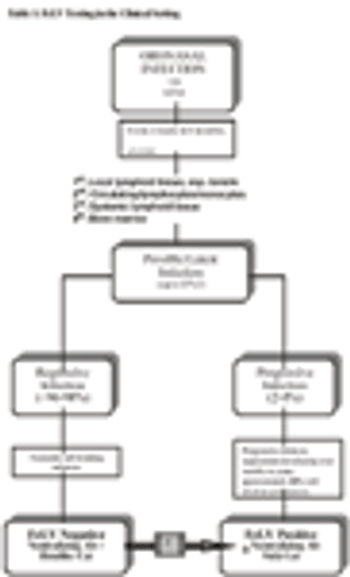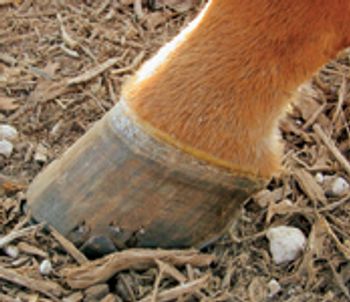
San Francisco -- The San Francisco Society for the Protection of Animals (SPCA) is cautioning pet owners who use Golden Gate Park in the Haight District to be aware of an increase in canine parvovirus cases in dogs that have visited it.

San Francisco -- The San Francisco Society for the Protection of Animals (SPCA) is cautioning pet owners who use Golden Gate Park in the Haight District to be aware of an increase in canine parvovirus cases in dogs that have visited it.

Columbia, Mo. -- A new Regional Biocontainment Laboratory (RBL) was dedicated earlier this month at the University of Missouri campus giving researchers the necessary tools to study emerging infectious diseases such as West Nile virus and tularemia, pathogens commonly found in Missouri.

Feline infectious peritonitis (FIP) is feared by people who breed cats. It is also frustrating to the veterinarian because of the difficulties in making a definitive diagnosis.

Feline leukemia virus was initially isolated from a household of cats in Scotland by Dr. Jarrett in 1964.

Feline calicivirus (FCV) is best known for its role in causing acute upper respiratory disease and oral ulceration in kittens and cats.

Feline Infectious Peritonitis (FIP) represents the worst outcome of infection with a common group of viruses: the feline coronaviruses (FCoVs).

Research in antifungal drugs has increased dramatically in the last two decades with the advances in organ transplantation and the epidemic of AIDS.

As long as we've known about, tried to diagnose, and attempted to treat feline infectious peritonitis (FIP), it still eludes us!

In just the past 3 to 5 years, advanced diagnostic capabilities have enhanced our ability to detect infectious pathogens in the dog and have given credence to the term "emerging" infections.

Histoplasmosis is a systemic fungal infection caused by Histoplasma capsulatum.

Simply stated, the goal of vaccination is to sensitize or prime the immune system such that it can generate a population of unique cells capable of mounting an effective immune response subsequent to infection by a pathogenic organism.

Vaccination GUIDELINES for the cat were first published in 1998; canine GUIDELINES followed in 2003. By the end of 2006, both sets of GUIDELINES had been reviewed extensively, updated, and published.

Closely related to Bordetella pertussis, the cause of "whooping cough" in humans, Bordetella bronchiseptica is a gram negative, Aerobic coccobacillus particularly well adapted to colonize the ciliated respiratory epithelium of dogs and cats.

Clinical signs related to the upper respiratory tract, in both dogs and cats, are among the most common presenting complaints encountered in small animal practice and, interestingly, are frequent reasons for referral to specialty practices and veterinary teaching hospitals.

If, according to an old English proverb, the eyes are the windows to the soul, then for horses and humans the nails and hooves may well be the windows to inner health or medical problems.

The convergence of people, animals and the environment could be the most critical risk factor to the spread of infectious disease.

International Report -- World leaders team up this weekend to spread rabies education and vaccines.

No longer confined to the southeast portion of the United States, canine heartworm infection has spread across the nation-notably increasing its distribution and prevalence throughout the western states during the last two decades.

It's a big year for mosquitoes in Florida, and one result is a much higher incidence of Eastern equine encephalitis (EEE).

Bradenton, Fla. -- A sixth horse tested positive for equine piroplasmosis (EP), this one on a second Manatee County property, the Florida Department of Agriculture and Consumer Services (DOACS) reported.

Houston -- The Department of Pathology and Laboratory Medicine at the University of Texas Medical School has been awarded a $150,000, two-year grant by the Norman Hackerman Advanced Research Program and the Texas Higher Education Coordinating Board to study a mysterious infection affecting Texas and other southern states.

Missouri - A number of Potomac Horse Fever (PHF) cases, normally not seen in Missouri, have been reported along the Mississippi River.

Bradenton, Fla. -- State officials quarantined a Manatee County property where five cases of equine piroplasmosis (EP), a disease not reported in the United States since 1988, were confirmed.

Ottawa, Canada - Bovine spongiform encephalopathy (BSE) was confirmed Aug. 15 in a six-year-old beef cow, according to the Canadian Food Inspection Agency (CFIA).

Prescott, Ariz. -- Imulan Biotherapeutics announced a study to test the effectiveness of a new immuno-therapeutic to treat dogs with coccidiodomycosis, or valley fever.